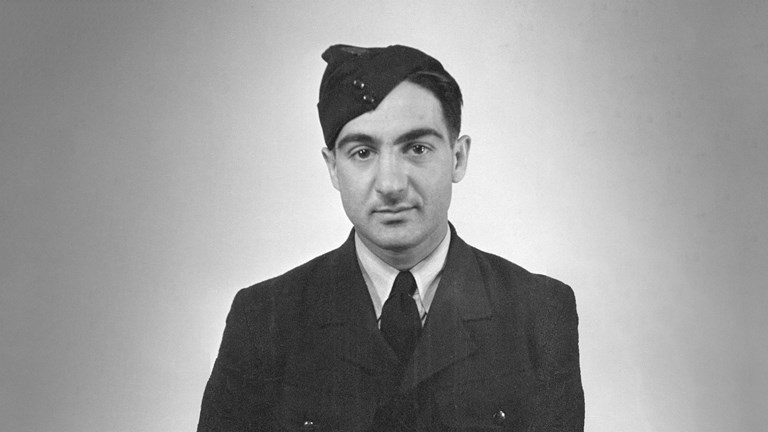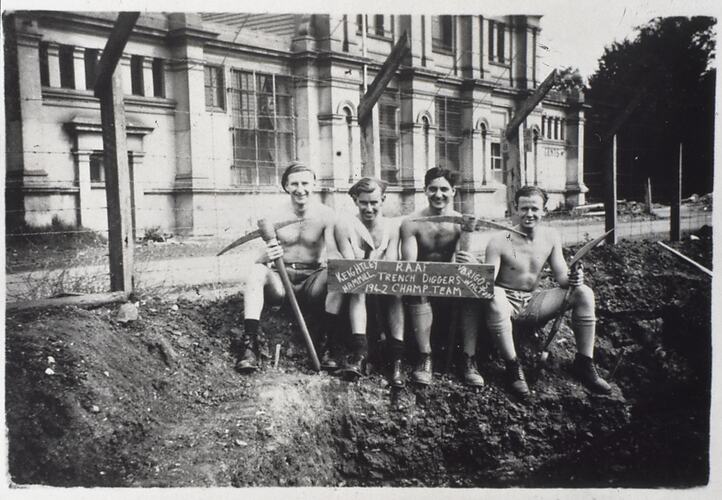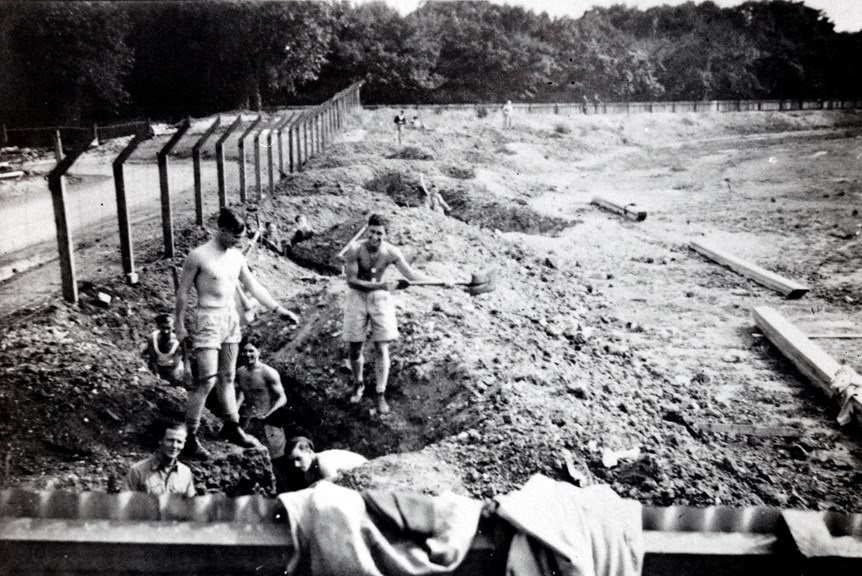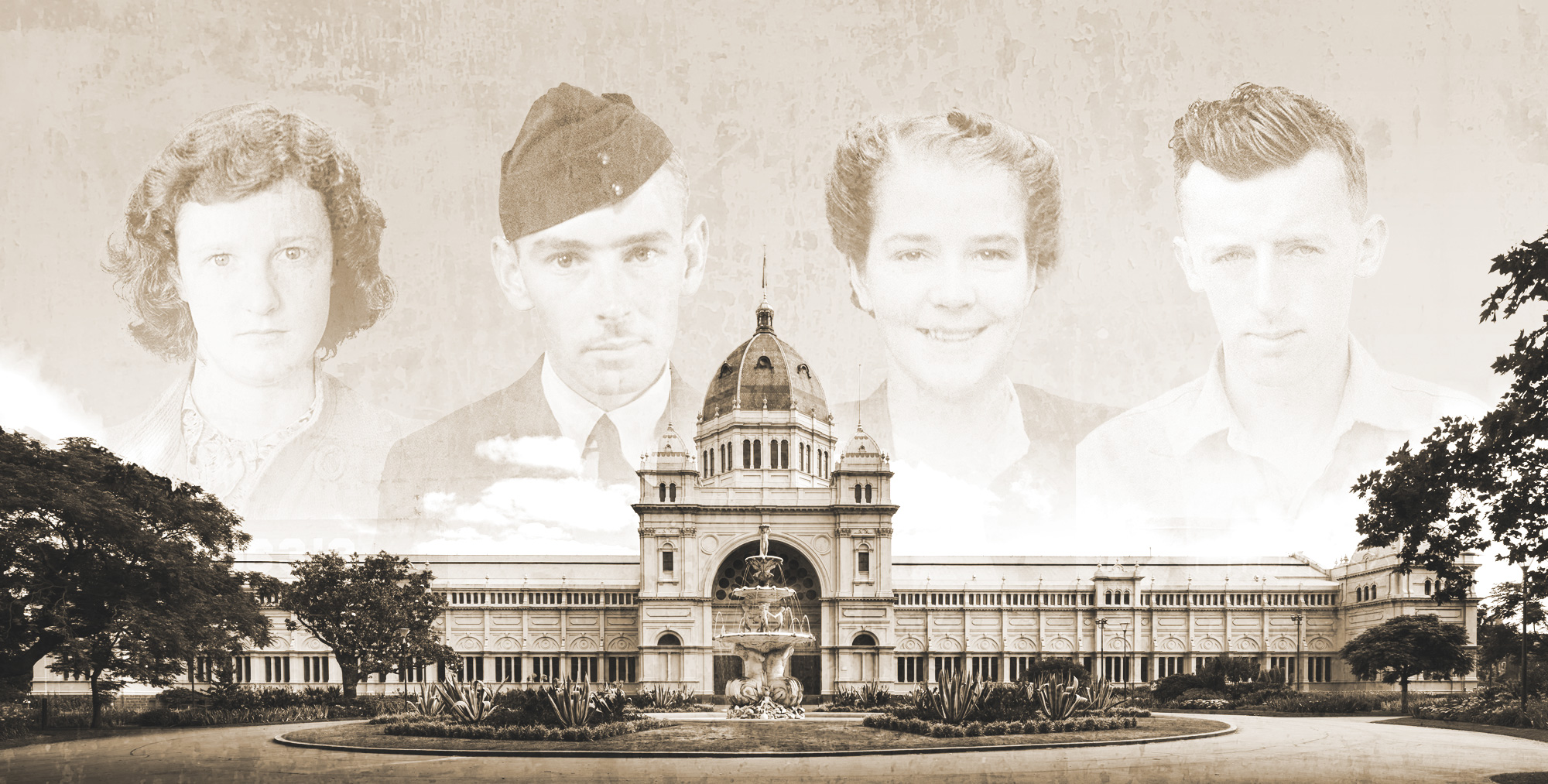
Dennis Varigos
Service #19444
From digger to druggist
You may not know it, but you’ve probably seen Dennis Varigos’ face before. He is one of the four members of the ‘RAAF Trench Diggers 1942 Champ Team’ pictured in a well-known photograph—taken on what is now the forecourt outside the Royal Exhibition Building. Trench digging was part of life for those stationed at the Exhibition Buildings during World War II, after Japanese bombing raids on Darwin in February 1942 raised the serious threat of invasion. Trenches and air raid shelters were being dug all over Melbourne, and not even the Carlton Gardens were safe from the pounding of spades.
Dennis was the son of Greek immigrants, and a 22-year-old student, when he decided to join the Royal Australian Air Force. On a hot spring day, in October 1940, he put on a neat suit and headed to the recruiting office where he was assessed as a ‘good type, very keen’, and accepted as a trainee instrument repairer. He would have been relieved—he had been rejected by the RAAF four months earlier because they had too many applicants. But a determined Dennis overcame this hurdle by arranging letters of reference to change the officials’ minds.
After initial training to become an instrument repairer at Richmond Aircraft Depot, NSW, Dennis came to the No. 1 School of Technical Training (1STT) at Melbourne’s Exhibition Building, in December 1941, to be trained as an instrument maker. It was during Easter the following year that the trench-digging photo was taken, likely by another RAAF instrument maker—Jack Van Emden.
Dennis rose to the rank of Corporal when he took on a teaching position at 1STT in 1944, and he was promoted again to Acting Sergeant in November 1945—a few months after the war ended. He was stationed at the No. 3 Aircraft Depot at Amberley, Queensland, when his discharge came through in June 1946.
He went on to become pharmaceutical chemist in Richmond—not far from the scene of his formative months at Melbourne’s Exhibition Buildings.
Explore more wartime stories from the Royal Exhibition Building


